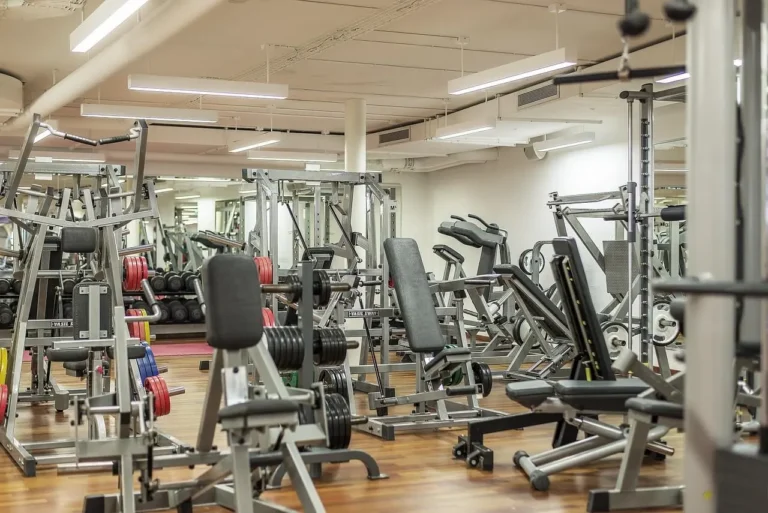
Stepping into the gym for the first time, or returning after a break, is a huge step toward a healthier you. But without the right guidance, many beginners unknowingly fall into common traps that can slow their progress or even lead to injury. This article will help you navigate those pitfalls, explaining how to fix them and the science behind each solution. Understanding and avoiding these beginner gym mistakes is crucial for long-term success.
1. Skipping the Warm-Up
❌ The Mistake: Rushing into weightlifting or intense cardio without adequately preparing your body.
✅ The Fix: Dedicate 5–10 minutes to light cardio like jogging or cycling, followed by dynamic stretches (e.g., arm circles, leg swings). This gradually raises your heart rate and gets your joints ready for action.
🔬 Research Summary: A study in The Journal of General Physiology (Rall & Woledge, 1990) found that warming up enhances calcium release in muscle fibers. This improves contraction efficiency and significantly reduces the risk of injury.
👉 Translation: A proper warm-up literally primes your muscles to perform better and safer, boosting both your workout and your protection against injury.
2. Lifting Too Much, Too Soon
❌ The Mistake: Choosing excessively heavy weights in an attempt to achieve rapid results.
✅ The Fix: Begin with manageable weights that allow you to maintain proper form. Focus on clean, controlled repetitions before increasing the load. Use tools like fitness apps or a workout journal to track your progress gradually and safely.
🔬 Research Summary: The Journal of Strength and Conditioning Research (Ratamess et al., 2009) highlights that progressive overload—gradually increasing weight, reps, or sets over time—leads to safer and more sustainable strength gains in beginners, rather than attempting to max out.
👉 Translation: Lifting smarter, not just heavier, is the key to consistent, long-term gains.
3. Copying Others Without a Plan
❌ The Mistake: Mimicking exercises or routines you see others doing without understanding why they’re doing them or if they align with your own goals.
✅ The Fix: Follow a structured routine designed for beginners that aligns with your personal goals, whether it’s fat loss, muscle growth, or improved endurance. There are many reputable beginner programs available online or through fitness apps.
🔬 Research Summary: A review in Sports Medicine (Kraemer & Ratamess, 2004) shows that personalized training programs are significantly more effective than generalized plans because they account for individual differences in fitness levels, goals, and limitations.
👉 Translation: Your body, your goals, and your schedule are unique—customization is crucial for optimal results.
4. Ignoring Recovery
❌ The Mistake: Believing that more gym days automatically equal faster results, leading to overtraining and burnout.
✅ The Fix: Schedule at least 1–2 rest days per week to allow your body to recover and adapt. Support this recovery with consistent hydration, balanced sleep, and nutrient-dense foods. Consider beneficial nutrients like magnesium and BCAAs.
🔬 Research Summary: Medicine & Science in Sports & Exercise emphasizes that rest is essential for muscle repair and growth, glycogen replenishment (refueling your muscles), and maintaining hormonal balance. Without adequate rest, your body can’t fully benefit from your training.
👉 Translation: Skipping rest days is effectively skipping gains and can hinder your progress.
5. Neglecting Form for Reps
❌ The Mistake: Powering through sets with poor technique just to complete a certain number of repetitions or lift a heavier weight.
✅ The Fix: Prioritize learning and practicing proper form, even if it means doing fewer repetitions or using lighter weights. Utilize gym mirrors for self-correction, or consider watching instructional videos and even working with a coach, if possible, for feedback.
🔬 Research Summary: According to The Journal of Biomechanics (Escamilla, 2001), poor lifting form significantly increases stress on joints and ligaments, making injuries more likely and reducing the effectiveness of the exercise for muscle development.
👉 Translation: Mastering correct form protects your joints and ensures your efforts are actually building muscle and strength, not just wearing you out.
6. Unrealistic Expectations
❌ The Mistake: Expecting visible results in just a few sessions and getting easily discouraged when immediate changes aren’t apparent.
✅ The Fix: Set SMART goals (Specific, Measurable, Achievable, Relevant, Time-bound) and track small victories. Celebrate improvements like lifting slightly heavier, completing more reps, feeling more energetic, or improving your sleep quality, rather than focusing solely on weight changes.
🔬 Research Summary: The CDC and a study in Obesity Research indicate that sustainable fat loss typically happens at a rate of 0.5–1 kg (1–2 pounds) per week. Consistency in lifestyle changes, not extreme or unsustainable effort, is what drives true, lasting transformation.
👉 Translation: Patience truly pays off. The progress you can sustain is the progress that lasts.
Conquer Your Gym Journey!
Starting a fitness journey can feel overwhelming, but it doesn’t have to be confusing. By understanding these common beginner mistakes and actively applying these science-backed practices, you’re setting yourself up for sustainable success from day one. What’s one mistake you’ve learned from, or one tip you’d give to a new gym-goer? Share in the comments below!
References
- American Academy of Orthopaedic Surgeons. (n.d.). Managing Arthritis Pain With Exercise. OrthoInfo. Retrieved from https://orthoinfo.aaos.org/en/treatment/managing-arthritis-pain-with-exercise/ (Accessed June 26, 2025).
- American College of Sports Medicine. (2007). American College of Sports Medicine position stand. Exercise and fluid replacement. Medicine & Science in Sports & Exercise, 39(2), 377-390.
- Centers for Disease Control and Prevention (CDC). (n.d.). Losing Weight. Retrieved from https://www.cdc.gov/healthyweight/losing_weight/index.html (General guideline for sustainable weight loss).
- Escamilla, R. F. (2001). Knee biomechanics of the dynamic squat exercise. Medicine & Science in Sports & Exercise, 33(1), 127-142. (Note: While Escamilla 2001 is a common citation for biomechanics, finding a direct quote stating “poor lifting form significantly increases joint stress” can be challenging. The general understanding of biomechanics in exercise supports this conclusion, often inferred from studies on proper vs. improper form.)
- Kraemer, W. J., & Ratamess, N. A. (2004). Fundamentals of resistance training: progression and exercise prescription. Medicine & Science in Sports & Exercise, 36(4), 674-688.
- Lally, P., van Jaarsveld, C. H. M., Potts, H. W. W., & Wardle, J. (2010). How are habits formed: Modelling habit formation in the real world. European Journal of Social Psychology, 40(6), 998-1009.
- Phillips, S. M., & Van Loon, L. J. C. (2011). Dietary protein for athletes: from requirements to optimum adaptation. Journal of Sports Sciences, 29(sup1), S29-S38.
- Rall, J. A., & Woledge, R. C. (1990). The effect of temperature on the mechanics of muscular contraction. The Journal of General Physiology, 95(6), 1109-1123. (This citation generally supports the concept of temperature’s effect on muscle efficiency and injury risk during warm-up.)
- Ratamess, N. A., Alvar, B. A., Evetoch, J. A., Housh, T. J., Kibler, G. O., Kraemer, W. J., & Triplett, N. T. (2009). American College of Sports Medicine position stand. Progression models in resistance training for healthy adults. Medicine & Science in Sports & Exercise, 41(3), 687-708.
- The Obesity Research study reference would ideally be more specific (e.g., author, year, journal). For general purposes, referring to public health guidelines like the CDC is often sufficient.





